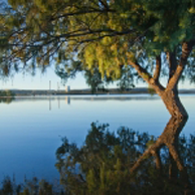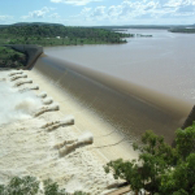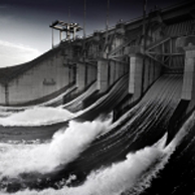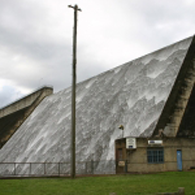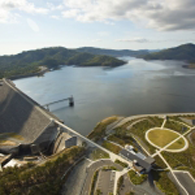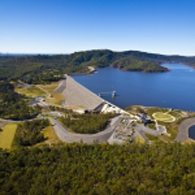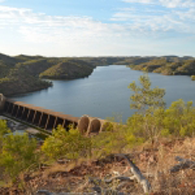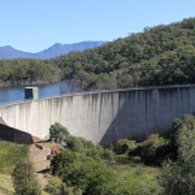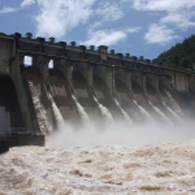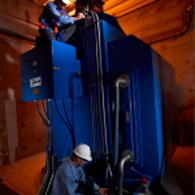1. Dams - do we still design and build them to last like we used to?
In this modern era there are less hand calculations being performed and reduced manual labour on site, with emphasis being placed on computer modelling during the design phase and mechanical plant used primarily in construction. This sub-theme aims to explore the impact of this paradigm shift in approach on the quality of dams and their long term performance and fitness for purpose. Are we blindly accepting computer generated ‘black box’ results or still applying engineering rigour to the data we review? With so little being constructed by hand, is there the same pride in workmanship and the finished product? Papers submitted for this sub-theme would be aimed at demonstrating high quality design and/or construction techniques or approaches currently being implemented that are innovative, whether for new dams or upgrades.
2. Is our equipment keeping up with technology?
This sub-theme encompasses all aspects of equipment associated with dams, such as electrical, mechanical and control equipment in outlet works, gated spillways and other electrical or mechanical assets. In particular, the sub-theme looks for:
- new types of equipment
- new technology or techniques to increase the reliability and safety of equipment
- improvedmethods of operation and/or maintenance of equipment
- When to replace or upgrade equipment
- Should I refurbish or modernize?
3. Spillways - critical dam safety infrastructure, but more than just hydraulics
This sub-theme encompasses all aspects of spillways, be they gated or uncontrolled. In the light of recent events at Oroville Dam, innovative techniques to investigate below spillway slabs and the measurement of pressures underneath spillways are topical. This sub-theme aims to explore whether we have focussed more on spillway capacity than performance, to the potential detriment of long term performance under flood loading.
4. Tailings dam safety - have we learnt our lessons?
This sub-theme encompasses all aspects of tailings dams that demonstrate an ongoing pursuit of best practice in the design, construction and management of tailings dams. In particular:
- innovations in construction techniques
- novel ideas for upgrading existing dams
- how we are using lessons learnt from recent incidents and dam failures to better management Australian tailings dams
5. Management, operation and maintenance of dams - What dam owners really think
This sub-theme aims to provide an avenue for owners to discuss all aspects of dam management from their perspective. In particular:
- advances in operation and maintenance
- dam safety management
- innovative surveillance practices
- balancing risk reduction and compliance with regulatory requirements and budgets
- meeting societal expectations
- dam surveillance with a safety first approach
6. Modern investigation techniques - can we rely on the results?
This sub-theme encompasses advances in techniques related to the investigation of dams, from survey to geotechnical investigation, seismic ground studies to physical modelling, the use of drones and measurement of performance during earthquakes.
7. Emergency management in an age of social media
Emergency management is a key aspect of dam safety management. In this modern era, social media plays a significant part in all of our lives. Advances in emergency management are taking full advantage of this and this sub-theme is aimed at showing how social media can help improve (or hinder) communication with regard to:
- emergency preparedness of communities
- communicating an emergency situation
- engagement and communication with key stakeholders
8. Climate variability and sustainability - how do they influence our thinking on dams?
Dams play an important role in water, food and energy security and their planning needs to consider the changing demands. Cape Town, South Africa, with a population of around four million people, is currently experiencing conditions that could make it the first major city in the world to run out of water and have the supply from its dams turned off. This sub-theme explores the impact of climate variability and sustainability perspectives on the design of dams. In particular:
- Adapting to changing rainfall patterns
- Hydrological modelling to account for revised rainfall and runoff estimates
- Reduced water availability and balancing passing flow requirements
- Allowances for fauna migration and protection
- Decommissioning of dams to reduce water demand on stressed catchments
9. Extreme flood hydrology - Is this the real life? Is this just fantasy?
The practice of hydrology and extreme flood modelling is ever-changing. The results of modelling see higher consequence dams and spillways being designed for very low frequency events. Can we be sure the numbers are reliable when they have changed so many times over the years? If we can, how much change do we still expect to see? This sub-theme explores all aspects of what is referred to by some as the ‘dark art’ of hydrology and extreme flood modelling.
10. Automated monitoring and data collection - are we there yet?
This sub-theme explores the use of technology to automate many aspects of the monitoring of dams including:
- remote camera installations to monitor dams or other structures in real time
- web-based and cloud-based portals for real time data gathering, sharing and assessment
- remote controlled data measurement (i.e. airborne or sub-aqueous drones)
- wi-fi enabled instrumentation measurement
